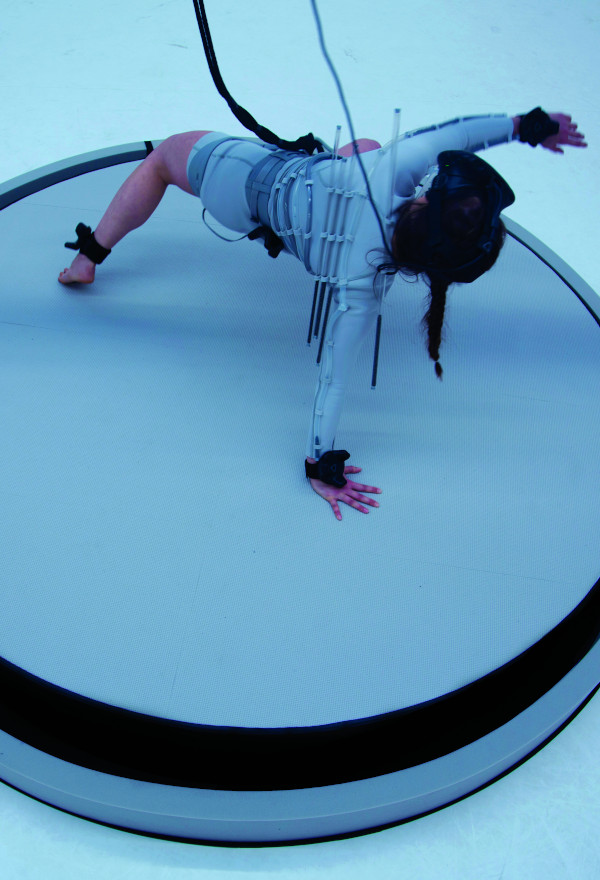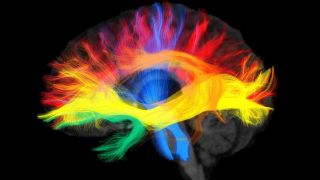There’s a paradox in our technically advanced environment: although sophisticated sensors and techniques have been developed to appeal to almost all of our senses, they almost exclusively target our visual senses. Even the new wave of VR content and experiments represent the participant’s body but don’t require any substantial action from it.
This sensory imbalance compounds the corporeal disconnect involved in our excessive screen use on one side, and the obsessive quantification of our activities through specific apps, on the other. With this paradox in mind, Elyne Legarnisson has developed (Un)Balance, an experience which she defines as an XR (extended reality). Developed at the Interactive Architecture Lab at UCL, it invites participants “to play on the edge of stability” for ten minutes. They move on a cushioned and tilting platform, challenging their sense of balance, while wearing an apparatus that augments the feeling of shifting weight and includes stimulation on the haptic and auditory level. Moreover, a VR headset connected to motion trackers on the participants’ body gives further feedback to these movements in a minimalist visual form.
Relaying on somaesthetics theories, the work is designed to explore an inner self-training, investigating the relationships between the different elements used to corporeally perceive space. The (dis)equilibrium that the system induces engages with our inner mechanisms, augmenting what we feel as reality. The body can feel and see itself, in a functional augmented and abstract mirror, aimed to extend (almost literally) its awareness towards a visible projection outside of it. Ultimately, this is one of the rare technical works where the body is treated as a field of exploration and not a mere tool.
Elyne Legarnisson – (Un)Balance













